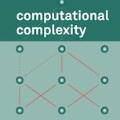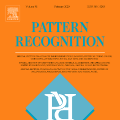Neuromorphic perception with event-based sensors, asynchronous hardware and spiking neurons is showing promising results for real-time and energy-efficient inference in embedded systems. The next promise of brain-inspired computing is to enable adaptation to changes at the edge with online learning. However, the parallel and distributed architectures of neuromorphic hardware based on co-localized compute and memory imposes locality constraints to the on-chip learning rules. We propose in this work the Event-based Three-factor Local Plasticity (ETLP) rule that uses (1) the pre-synaptic spike trace, (2) the post-synaptic membrane voltage and (3) a third factor in the form of projected labels with no error calculation, that also serve as update triggers. We apply ETLP with feedforward and recurrent spiking neural networks on visual and auditory event-based pattern recognition, and compare it to Back-Propagation Through Time (BPTT) and eProp. We show a competitive performance in accuracy with a clear advantage in the computational complexity for ETLP. We also show that when using local plasticity, threshold adaptation in spiking neurons and a recurrent topology are necessary to learn spatio-temporal patterns with a rich temporal structure. Finally, we provide a proof of concept hardware implementation of ETLP on FPGA to highlight the simplicity of its computational primitives and how they can be mapped into neuromorphic hardware for online learning with low-energy consumption and real-time interaction.
翻译:以事件为基础的传感器、非同步硬件和神经神经元的神经失常感的平行和分布结构对基于事件的传感器、非同步的硬件和神经元的神经神经元的神经失常感正在显示在嵌入系统中实时和节能的推断效果方面大有希望的结果。接下来的由大脑启发的计算将使得适应在线学习的边缘变化。然而,基于共同定位的计算和记忆的神经失常硬件平行和分布结构会给基于视觉和审校事件模式的识别造成局部限制。我们在此工作中提议,基于事件的三个因素的地方可塑性(ETLP)规则将使用(1) 合成前的峰值跟踪、(2) 后合成的合成膜电流和(3) 以预测标签形式出现的第三个因素,而没有错误计算,也可以作为更新触发因素。我们应用以反馈和反复的神经致幻网络网络对视觉和审校事件模式的识别,并将它与时间(BBTTT)和eProp进行对比。我们展示其精确性表现的竞争力,其计算复杂性的准确性明显地有利于计算精度的精度的精度结构结构,从而最终将精度地将精度的精度的精度转化为的精度转化为的精度转化为的精度转化为的精度结构进行。我们展示。



